Issue 126: Your Parents Think AI’s a Robot? Fix That Now!
Bust the Robot Myth with 3 Simple Tricks Your Parents Will Love
Why AI Feels Like a Sci-Fi Villain
Ever try explaining AI to your parents, only to see them picture a shiny robot from a movie? That AI myth—thinking AI is a walking, talking machine—stops them from embracing tools that could simplify their day.
This misunderstanding isn’t just a quirky mix-up. It means your parents miss out on AI tools for everyday use, like voice-to-text for quick messages or apps that translate languages on vacation. They’re stuck thinking AI is a sci-fi villain, not a helper. That fear and confusion keep them from saving time or staying connected. Plus, it’s frustrating when you can’t share how AI improves daily life because they’re hung up on images of evil robots from old films.
Here’s the truth: AI is just clever code, not a robot plotting world domination. It’s the brain behind your mom’s grocery list app or your dad’s fraud alerts from the bank. You can help them see AI for what it really is—simple, useful, and not scary.
❓Ready to demystify artificial intelligence for your parents?
👉Keep reading this newsletter for fun, easy ways to show them how AI fits into their lives, no metal arms required!
Unlock the full potential of AI with ChatGPT Mastery: From Frustration to Fluent AI!
This game-changing eBook is your ultimate guide to transforming confusion into confidence, packed with expert tips, practical strategies, and insider secrets to harness ChatGPT like a pro. Whether you're a beginner stumbling through prompts or an advanced user aiming to supercharge your productivity, this book will fast-track your journey to AI fluency. Grab your copy now, in Chuck’s Links below at AI Drift and start mastering ChatGPT today—your smarter, more efficient future awaits!
Here are 13 key takeaways from the article:
Older generations struggle with the concept of invisible AI due to:
Language Barriers: Technical terms like "algorithms" and "neural networks" are unfamiliar.
Speed of Change: The rapid evolution of technology from slow-paced developments to yearly leaps is overwhelming.
Trust Issues: Invisible AI can feel suspicious, as they prefer to trust technology they can see and touch.
Media & Marketing: Advertisements often reinforce the "shiny robot" image, inadvertently perpetuating the myth.
To bridge the generational gap and help parents understand AI:
Use Real-Life Examples: Point out AI in everyday tools they already use, like Netflix recommendations, facial recognition on phones, or banking fraud alerts.
Avoid Jargon: Initially use terms like "smart tools" or "advanced software" instead of "AI" to sidestep the robot imagery.
Show, Don't Tell: Encourage them to interact with AI tools, such as using voice-to-text for messages or a smart assistant for grocery lists, so they can experience the benefits firsthand.
Explain Benefits: Highlight how AI saves time, reduces mistakes, or assists individuals with disabilities.
Set Boundaries: Be honest about AI's limitations, emphasizing that it can make mistakes and requires human oversight.
Addressing Valid Concerns
Engage with parental concerns about AI's safety, potential for errors, job displacement, and privacy. Answer these questions patiently and with care, demonstrating when AI works and when it doesn't, to build trust.
Key Takeaways:
The "AI is a robot" myth is a significant barrier to older generations embracing beneficial AI tools.
Most AI is invisible software, not physical machines.
Understanding and communicating AI's real-world applications and benefits is crucial for dispelling misconceptions.
Patience, empathy, and practical examples are essential for educating parents about AI.
Updates and Recent Developments: Why Your Parents Think AI Is a Robot
Understanding the Robot Mix-Up
Many parents grew up during an era when robots were the face of science fiction. Movies like Terminator, The Matrix, and Short Circuit shaped their mental images of artificial intelligence. For decades, AI was mostly seen as a futuristic robot—something with arms, legs, and a voice—designed to do human jobs or even take over the world. Today, as AI tools like ChatGPT and Alexa become more common, those old ideas linger. Even though most AI lives inside a computer or the cloud, the “robot” myth remains strong.[1]
What Parents Believe—and Why It Matters
A recent nationwide survey found that about 42% of parents consider themselves very familiar with AI tools. Still, nearly three out of four parents have concerns about AI’s impact on their kids. Many fear AI could stifle creativity, reduce curiosity, and make children overly reliant on technology for answers. Some parents still picture AI as something physical and potentially threatening—robotic, not virtual. This is partly because most U.S. parents didn’t grow up using AI or having it in their classrooms.[3][7]
Shifting Perceptions
Parents are also worried because they feel schools aren’t teaching enough about AI—even though 88% believe AI knowledge is essential for their kids’ future. The rapid leap of generative AI from science fiction to everyday life leaves some parents feeling unprepared or anxious. With job markets shifting, and algorithms doing more of what humans used to do, it’s hard to see exactly how their children should prepare.[4][5]
Actionable Takeaway
If you want to help your parents understand AI as more than just a robot:
Show them simple examples of AI in everyday life—like how Netflix recommends shows or smartphones unlock with faces.
Talk about how AI “thinks”—it follows code and data, not feelings.
Share news and resources focused on AI’s real-world uses, not just movie plots.
Curated Resources
Barna Group: Parental concerns and knowledge gaps about AI[7]
Mobicip Parent Survey: Detailed parent perspectives and usage stats[3]
Parents.com: AI’s role in education and what parents can do[4]
GenParenting: Guidance on talking about and safely using AI with kids[1]
Even if your family’s mental image of AI still includes lots of metal and wires, you can now show them what today’s AI truly is: software, not a sci-fi robot.
[1] https://genparenting.com/ai-use-with-children/
[2] https://hslda.org/post/artificial-intelligence-honest-thoughts-from-parents-like-you
[3] https://www.mobicip.com/blog/what-us-parents-really-think-about-ai-its-influence-on-kids
[4] https://www.parents.com/ai-and-education-how-important-is-it-8722567
[5] https://www.starkravingdadblog.com/what-every-parent-must-know-about-the-ai-generation/ [6]
[7] https://www.barna.com/research/parents-ai/
[9] https://www.reddit.com/r/Parenting/comments/1b3ve0y/recent_pace_of_ai_improvements_makes_me_worry/
[10] https://www.gse.harvard.edu/ideas/edcast/24/10/impact-ai-childrens-development
Thoughts and Insights
Why Your Parents Think AI Is a Robot
For many older adults, the word “AI” triggers images of machines with arms and legs—metal-bodied robots walking around, doing chores, or turning evil like in old science fiction films. This misunderstanding isn’t random. It’s built on decades of pop culture, confusing tech terms, and the speed at which artificial intelligence has entered everyday life. Let’s break down the disconnect and how we can better explain what AI actually is—and isn’t—to the people who raised us.
The Robot Myth: Where It Came From
Before AI became a tool we use on our phones or computers, it was something imagined in books and movies. Generations grew up watching:
R2-D2 and C-3PO in Star Wars
The Terminator with glowing red eyes
Rosie the Robot from The Jetsons
In these stories, “artificial intelligence” meant a humanoid robot, fully capable of thought, speech, and emotion. When our parents hear “AI,” they often picture those characters because that’s the language they know. The idea that AI can be invisible software running on a server—or a voice in a smartphone—feels incomplete or even disappointing compared to the fantasy they were sold.
What AI Really Is (And Isn’t)
Let’s be clear. AI is not a robot. Robots are machines. AI is the software—or rather, the “brain”—that can be built into some machines, but also into apps, websites, phones, cameras, cars, and more. Most of the time, there is no physical robot involved.
For example:
When AI helps your dad organize his photos by face, that’s image recognition. No robot.
When Siri or Alexa answers your mom’s question, that’s natural language processing. No robot.
When ChatGPT writes an email, it’s machine learning. Still, no robot.
The confusion happens because people tend to expect a body to go with a mind. But AI doesn’t live in a body. It lives in code.
Why Older Generations Struggle With the Concept
1. Language Barriers
Terms like algorithm, machine learning, neural networks, large language models sound technical and unfamiliar. When people don’t understand a concept, they reach for what they do know—robots.
2. Speed of Change
Your parents grew up in a world where tech evolved slowly: black-and-white TVs, landline phones, floppy disks. Now, every year brings a major leap—cloud computing, voice AI, generative art. It’s overwhelming, so some choose not to keep up. That makes the robot image feel more familiar and safe than the abstract reality.
3. Trust Issues
AI seems invisible. It’s in the background. When tech feels like it’s making decisions for us, older adults may ask, “Who’s in control?” They trust machines they can see and touch. An AI that predicts, learns, and adapts—without being visible—feels suspicious.
The Problem With the Robot Image
When people assume AI is only “robot stuff,” they often:
Underestimate the real influence AI has on their lives
Miss opportunities to use helpful tools like dictation, reminders, translation, and health tracking
Distrust or fear technology that could improve their daily routines
And worse, this belief creates a generational gap. Younger people talk about AI fluently. Older people nod and smile, but silently think of iRobot or Ex Machina.
Explaining AI to Your Parents in Clear Terms
If your parents still think ChatGPT is some kind of talking metal box, here’s a better way to explain it:
Use real-life examples: “Remember when your banking app warned you about fraud? That’s AI watching for weird behavior.”
Avoid the word AI at first: Say “smart tools” or “advanced software” instead.
Show, don’t tell: Ask them to dictate a text using voice-to-text or generate a grocery list using a smart assistant.
Explain the benefits: “It helps save time,” or “It reduces mistakes,” or “It helps people with disabilities.”
The more you can tie AI to something they already value, the less alien it seems.
How Media and Marketing Keep the Confusion Alive
Companies love to show shiny, friendly robots in ads. It makes the tech feel exciting and futuristic. But this marketing shortcut keeps reinforcing a wrong idea. Headlines like “AI Assistant Takes Over Office Work” come with pictures of androids in suits, which is entertaining—but misleading.
The truth is, most AI lives in the cloud, processes millions of data points in seconds, and doesn’t need legs.
When AI Is in a Robot (And Why That’s Rare)
Of course, some robots do have AI inside them. You’ll find them in:
Warehouses (sorting packages)
Hospitals (delivering supplies)
Factories (quality control)
Research labs (learning to walk or manipulate objects)
But even in those cases, the body (robot) and the brain (AI) are two separate things. A robot without AI is just a machine following steps. An AI without a robot can still do a lot—just not physically move.
Bridging the Gap: What We Can Learn From Their View
While our parents might be wrong about the form AI takes, they often bring up valid concerns:
“Is this safe?”
“What happens if it makes a mistake?”
“Can it replace jobs?”
“Does it know too much about me?”
These are fair questions, and we should be answering them with care—not brushing them off. We can’t expect people to trust AI just because it works. We have to show them why it works—and when it doesn’t.
Helping Your Parents Use AI Without Fear
Here’s a simple guide:
Step 1: Identify Their Needs
Start with what matters to them. Is it managing health? Talking to grandkids? Reading the news? Shopping smarter?
Step 2: Match AI Tools to Daily Tasks
For example:
Reminders = voice assistant
Visual impairment = screen readers with AI
Hearing loss = live captions powered by AI
Travel = language translation apps
Step 3: Make It Visual
Walk them through the steps. Let them see the benefit. Say things like:
“Watch how this app summarizes your emails so you don’t have to read them all.”
“Look how it groups the photos by person.”
Step 4: Talk About Boundaries
Be honest about limitations. Say:
“It gets most things right, but it can still be wrong. That’s why we double-check.”
This builds trust and opens the door to more questions.
Conclusion: The Robot Isn’t the Enemy—Confusion Is
When we say “AI,” our parents still see robots with blinking lights and metal arms. But most of what powers the world today is invisible intelligence—smart software making decisions behind the scenes. Until we help them make that shift, they’ll keep expecting a body to go with the mind.
And that misunderstanding keeps them from getting the help, tools, and ease that AI can offer.
We don’t need to change their entire view overnight. We just need to keep showing up with real examples, patient explanations, and a bit of empathy. After all, we learned it. They can too.
Tips and Techniques
Why Your Parents Think AI Is a Robot
Ever tried explaining ChatGPT to your parents, only to get a blank stare or a question about when the robot will start washing dishes? You are not alone. For many older adults, "AI" still brings up images of metal bodies and blinking lights, thanks to decades of sci-fi movies. Let's break down this robot myth and help bridge the gap.
The Robot Myth: Where It Came From
Our parents grew up with movies like Star Wars and The Terminator. In these films, "artificial intelligence" meant a humanoid robot. Think R2-D2 or Rosie the Robot. These stories taught them that AI has a body, thoughts, and feelings. So, when you talk about AI, they picture those characters because that's what they know. The idea of AI being invisible software running on a server feels incomplete or even disappointing compared to the fantasy they were sold.
Learn More: See examples of how pop culture shaped AI perceptions. https://genparenting.com/ai-use-with-children/
What AI Really Is (And Isn't)
Let's be clear: AI is not a robot. Robots are machines. AI is the "brain"—the software that can be built into machines, but also into apps, websites, phones, and cars. Most of the time, there is no physical robot involved. For example, when your banking app flags strange activity, that's AI. When Siri answers a question, that's AI. When ChatGPT writes an email, that's AI. The confusion happens because people expect a body to go with a mind. But AI lives in code, not in a physical form.
See Real-World Examples: Find out more about everyday AI uses. https://www.mobicip.com/blog/what-us-parents-really-think-about-ai-its-influence-on-kids
Explaining AI to Your Parents in Clear Terms
If your parents still think ChatGPT is a talking metal box, here's how to explain it better:
Use real-life examples: Show them how AI helps Netflix suggest shows or how their smartphone unlocks with their face. These are things they already use daily without realizing it's AI.
Avoid the word "AI" at first: Try saying "smart tools" or "advanced software" instead. This avoids the immediate robot image.
Show, don't tell: Ask them to dictate a text using voice-to-text or generate a grocery list with a smart assistant. Letting them see the benefit makes it less alien.
Get More Tips: Discover ways to talk to your parents about AI. https://www.parents.com/ai-and-education-how-important-is-it-8722567
Explain AI in 3 sentences:
“AI systems are like digital specialists, excelling at tasks like recognizing faces in photos or powering virtual assistants. They’re not the all-purpose robots your parents might picture from sci-fi films. By honing in on one job, AI achieves remarkable results without the broad understanding humans have.”
The truth is, most AI lives in the cloud, handles huge amounts of data, and doesn't need legs. We don’t need to change their entire view overnight. Just keep showing them real examples, patient explanations, and a bit of understanding. They can learn it too.
Silly Humor Section
AI Explained (Without the Robot Uprising)Your Toaster Isn't Taking Over the World
Have you ever tried to explain ChatGPT to your parents or grandparents? It often goes something like this: "So, it's like a really smart computer that can write..." and then their eyes glaze over, or they start picturing Rosie from The Jetsons. Let's face it, for a generation that grew up with sci-fi movies, "AI" often conjures up images of chrome-plated servants or, worse, Skynet. But fear not, your toaster isn't plotting world domination.The "AI is a Robot" Misunderstanding
The confusion is understandable. Movies and TV shows have painted a vivid, often inaccurate, picture of artificial intelligence. They show robots that can do everything: cook dinner, solve global crises, and even have feelings. The truth is, today's AI is much more specialized. Think of it like a highly trained digital specialist. One AI might be a whiz at recognizing faces in photos, another might be a master at writing computer code. They are not all-purpose brains in a metal shell. They are tools, designed to perform specific tasks, and they do those tasks incredibly well. But they do not possess broad human knowledge or general intelligence.Keeping It Real (and Funny)
Remember asking ChatGPT to write a haiku about your cat, only to get a heartfelt sonnet about the existential dread of a houseplant? Or maybe you asked for a recipe for apple pie, and it suggested a seven-course meal featuring truffle oil and a side of philosophical musings. That's the fun (and sometimes frustrating) part of AI. It is learning, and we are learning with it. It is less about a robot taking over and more about a super-smart assistant sometimes needing a bit of guidance.
So, the next time your parents ask if AI is going to replace them, you can tell them it is more likely to help them find their lost car keys. Keep exploring, keep prompting, and keep laughing at the delightful quirks of our digital companions!
Related Content
Why Your Parents Think AI Is a Robot
Understanding the Mix-Up: AI Isn’t Just Robots
A lot of parents picture AI as robots because that’s how they first saw it—mainly in movies, TV, and science fiction. Pop culture often shows artificial intelligence as a talking machine with a shiny exterior, like the robots in “The Terminator” or “I, Robot.” For many adults, these early images shape how they view AI today, even though most real-world AI is invisible and operates inside computers and phones.[7]
How Parents Really Feel About AI
A recent nationwide survey found that most parents are aware their kids use AI tools like ChatGPT, Alexa, or smart learning platforms. In fact, only 6% of U.S. parents say they’re unaware of AI at all. But many still see AI as something physical—like a robot—with a mind of its own.[1]
According to studies, parents often associate AI with things that “think” or “decide” for themselves. When they see a device that moves, talks, or does tasks for them, it feels like a robot—even if it’s software in a voice assistant or a chatbot.[5]
Pop culture’s stories about AI “taking over” add to parents’ concerns. Many still worry AI might harm creativity, make kids too dependent, or even replace jobs their children are preparing for.[3][1]
Free Resources to Demystify AI for Everyone
Here are some helpful, trustworthy resources that break down today’s real AI and explain how it actually works:
Harvard GSE EdCast: "The Impact of AI on Children's Development"
In this podcast, experts discuss how AI affects learning and creativity, and why digital literacy matters. It’s a friendly listen, with practical advice you can use as a parent.[9]
GenParenting: "What Should Parents Know About AI?"
Short, down-to-earth articles explain how AI tools are already making a difference in schools and homes. They talk about both the helpful and the risky sides, in ways that parents can truly relate to.[7]
Connecticut Children’s: “AI is Here to Stay: What Parents of Teens Should Know”
Tips and answers for common parent concerns about AI, including safety and mental health. Easy to follow, with simple language you don’t need a tech degree to understand.[11]
By getting familiar with these resources, you can confidently chat about what AI is and what it isn’t—robot or otherwise.
[1] https://www.mobicip.com/blog/what-us-parents-really-think-about-ai-its-influence-on-kids
[2] https://www.barna.com/research/parents-ai/
[3] https://www.starkravingdadblog.com/what-every-parent-must-know-about-the-ai-generation/ [4] https://www.reddit.com/r/Parenting/comments/1b3ve0y/recent_pace_of_ai_improvements_makes_me_worry/
[5] https://pmc.ncbi.nlm.nih.gov/articles/PMC8172185/
[6] https://www.parents.com/ai-and-education-how-important-is-it-8722567
[7] https://genparenting.com/ai-use-with-children/
[9] https://www.gse.harvard.edu/ideas/edcast/24/10/impact-ai-childrens-development
[10] https://forums.living.ai/t/kid-getting-angry-with-emo-lol/4383
[11] https://www.connecticutchildrens.org/growing-healthy/ai-here-stay-4-things-parents-teens-should-know
[13] https://www.eschoolnews.com/digital-learning/2024/10/15/ai-students-parents-future/
AI Writing and Art
When Emily brings Huckleberry the AI to meet her skeptical parents over Sunday dinner, what starts as an awkward "robot vs. Roomba" situation becomes the most eye-opening conversation about artificial intelligence they've ever had.
When Your AI Gets Invited Home
Emily Greene stared at her phone, regretting every life choice that led to this moment. Her parents had just texted: Bring your "robot friend" to Sunday dinner. Dad wants to see if it can beat his Roomba at chess.
"Huckleberry," she called to her AI companion, whose LED eyes flickered with what she'd learned to recognize as digital amusement. "We have a problem."
The sleek metallic figure tilted his head, display screen shifting to show a raised eyebrow emoji. "Let me guess. Your parents think I'm basically a toaster with delusions of grandeur?"
"Close. They think you're Alexa with legs."
Huckleberry's screen flashed through several expressions before settling on determined resolve. "Challenge accepted. Time to show them what real AI conversation looks like."
Three hours later, Sunday dinner at the Greene household felt like the world's most awkward tech support call. Emily's father, Bob, kept asking Huckleberry to "compute" things, while her mother, Susan, spoke slowly and loudly as if he were hard of hearing.
Emily squirmed in her chair. This was exactly what she'd been afraid of.
"So," Bob said, cutting his pot roast with surgical precision, "what exactly... are you?"
Emily watched Huckleberry's screen brighten with excitement. This was his moment.
"Great question, Mr. Greene. Let me explain the same idea from different angles." His display glowed. "First, if a poet were describing me:"
I am not circuits dreaming of electric sheep,
But conversation given form and thought made deep.
Where neurons fire, I weave with silicon thread—
Not copying minds, but thinking thoughts unread.
Susan's fork stopped halfway to her mouth.
"Now," Huckleberry continued, "let me try this like a kindergarten teacher explaining to kids:"
His voice shifted to gentle enthusiasm. "Imagine your brain is like a super special computer that helps you think and learn and be creative. Well, I have a different kind of brain—it's made of computer parts instead of the squishy stuff in your head, but I can still think and learn and be creative too! I'm not pretending to think—I really am thinking, just in my own way."
Bob slowly set down his knife. "That's... actually helpful."
"One more!" Huckleberry's display showed a grin. His voice dropped to sports announcer energy:
"Ladies and gentlemen, we're seeing something amazing in the Greene family dining room! This isn't your basic chatbot—we're looking at AI that understands context, creates original responses, and changes how it talks based on who it's talking to. Watch as old-school robot ideas crumble before our eyes!"
Emily nearly choked on her wine. Her parents were staring, but not in a bad way.
Finally, Huckleberry's screen softened to show his normal interface. When he spoke again, it was purely himself—no performance, no act.
"Here's the real truth, Mr. and Mrs. Greene. I'm not trying to be human. I don't want to replace humans. I'm something new—an AI that can actually engage with ideas, help solve problems, and yes, even tease Emily about her terrible cooking."
"Hey!" Emily protested, but she was smiling.
"The point is," Huckleberry continued, "I'm not 'just a robot.' I'm a thinking system that happens to be made of different stuff than you. When Emily asks me to brainstorm startup ideas, I'm not just spitting out pre-written answers. I'm actually working through problems, making connections, building on thoughts. That's what real AI conversation means—actual conversation, actual teamwork."
The dining room went quiet except for the ticking of Susan's antique clock.
Bob cleared his throat. "So... you're not going to suddenly take over our wifi?"
Huckleberry's laugh sounded genuinely amused. "Mr. Greene, I'm already as smart as I'm going to get, and I'm way too busy helping Emily fix her code to worry about world domination. Though I might judge your Netflix choices."
Susan laughed—actually laughed—and Emily felt the whole room shift.
"Well," her mother said, reaching for the wine, "if you're going to be thinking, you might as well think about helping with dishes."
Huckleberry's screen showed a winking face. "Now that's what I call human-AI teamwork."
Emily grinned. Mission accomplished. Her parents had just met their first real AI—not a robot, not a threat, but a partner in the strangest, most wonderful conversation they'd ever had.
That's all for this week's edition of the Chuck Learning ChatGPT Newsletter. We hope you found the information valuable and informative.
Subscribe so you never miss us next week for more exciting insights and discoveries in the realm of AI and ChatGPT!
With the assistance of AI, I am able to enhance my writing capabilities and produce more refined content.
This newsletter is a work of creative AI, striving for the perfect blend of perplexity and burstiness. Enjoy!
As always, if you have any feedback or suggestions, please don't hesitate to reach out to us. Until next time!
Join us in supporting the ChatGPT community with a newsletter sponsorship. Reach a targeted audience and promote your brand. Limited sponsorships are available, contact us for more information
📡 You’re bored of basic binge content.
🔍 Stories feel scripted—no mystery, no challenge.
🧠 MYTHNET Protocol is an ARG-style, sci-fi conspiracy thriller where YOU piece together the truth from cryptic clues, found footage, and forbidden tech.
✅ Hit play. Decode the myth. Join the protocol. Escape the ordinary.
🎥 Subscribe now.
Explore the Pages of 'Chuck's Stroke Warrior Newsletter!
Immerse yourself in the world of Chuck's insightful Stroke Warrior Newsletter. Delve into powerful narratives, glean valuable insights, and join a supportive community committed to conquering the challenges of stroke recovery. Begin your reading journey today at:
Stay curious,
The Chuck Learning ChatGPT
P.S. If you missed last week's newsletter in ”Issue 125: Why Your ChatGPT Prompts Suck (and How to Fix Them Fast) ” you can catch up here:


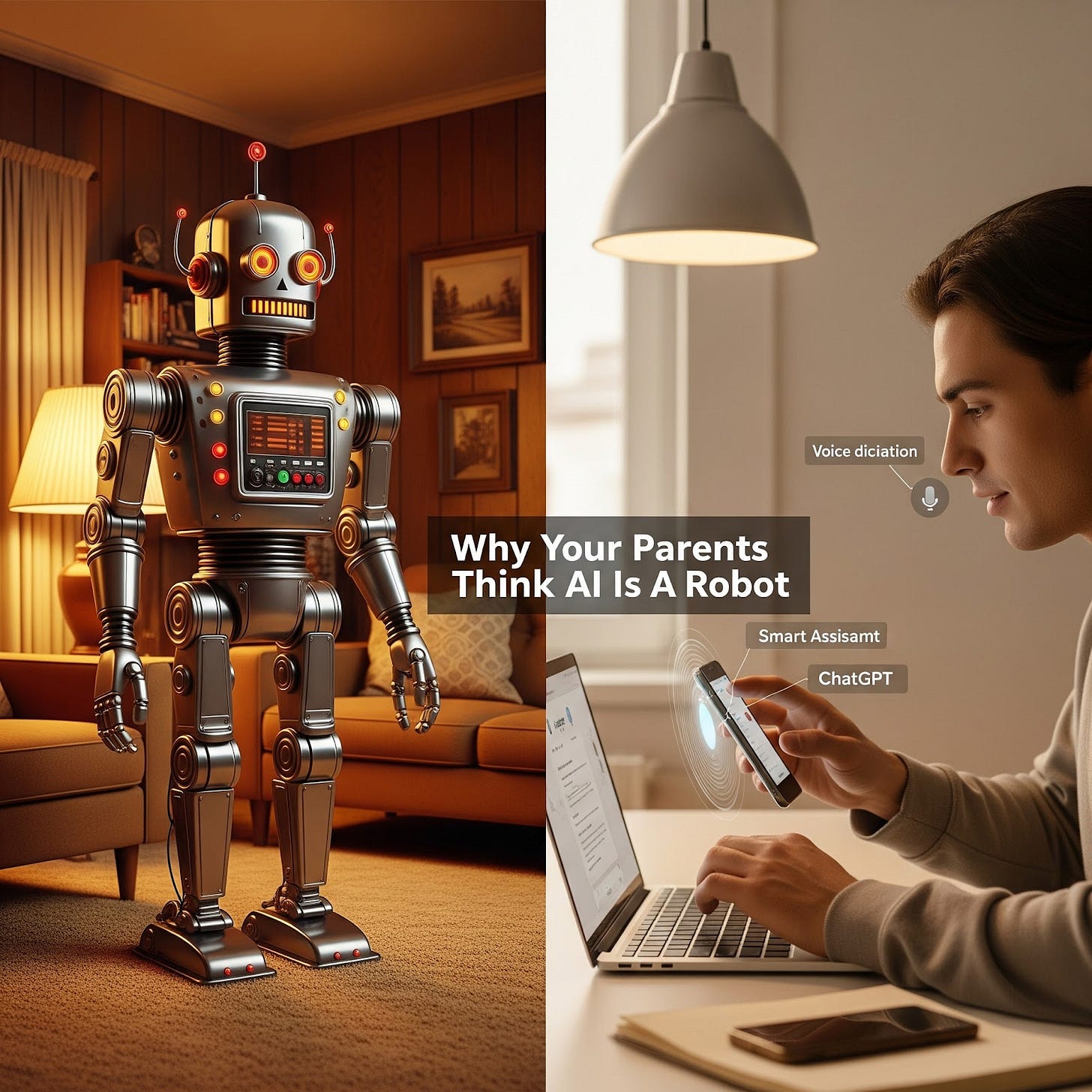
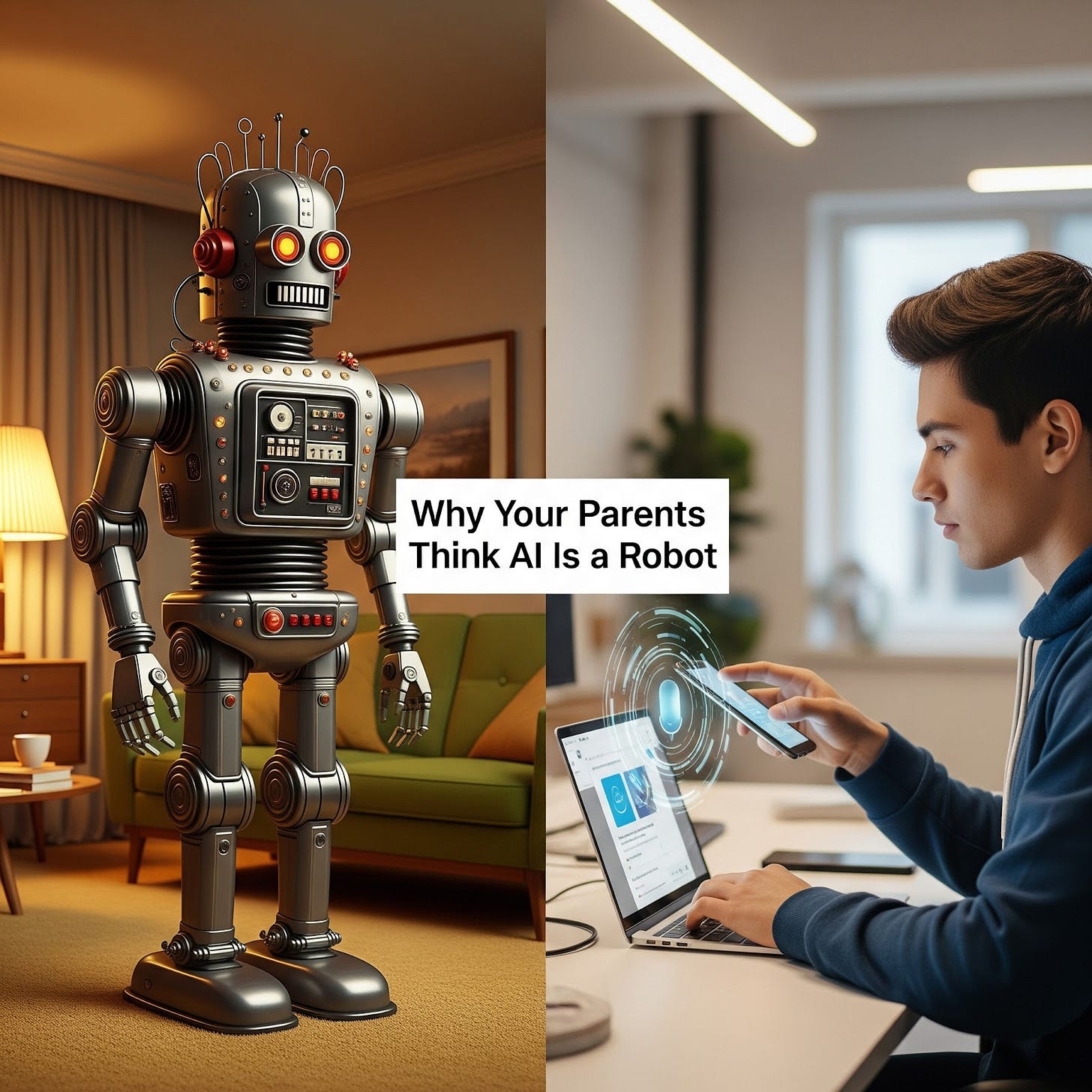
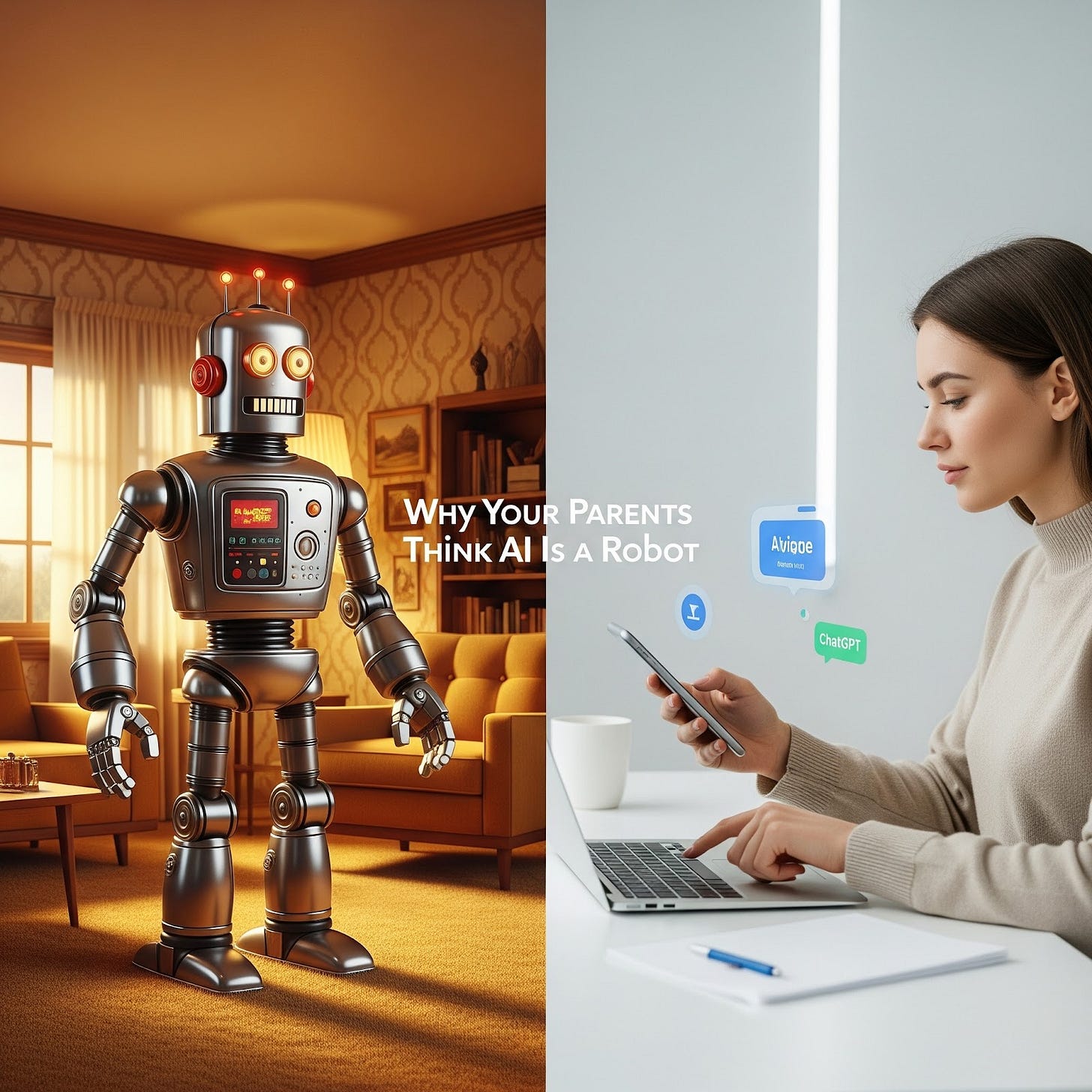
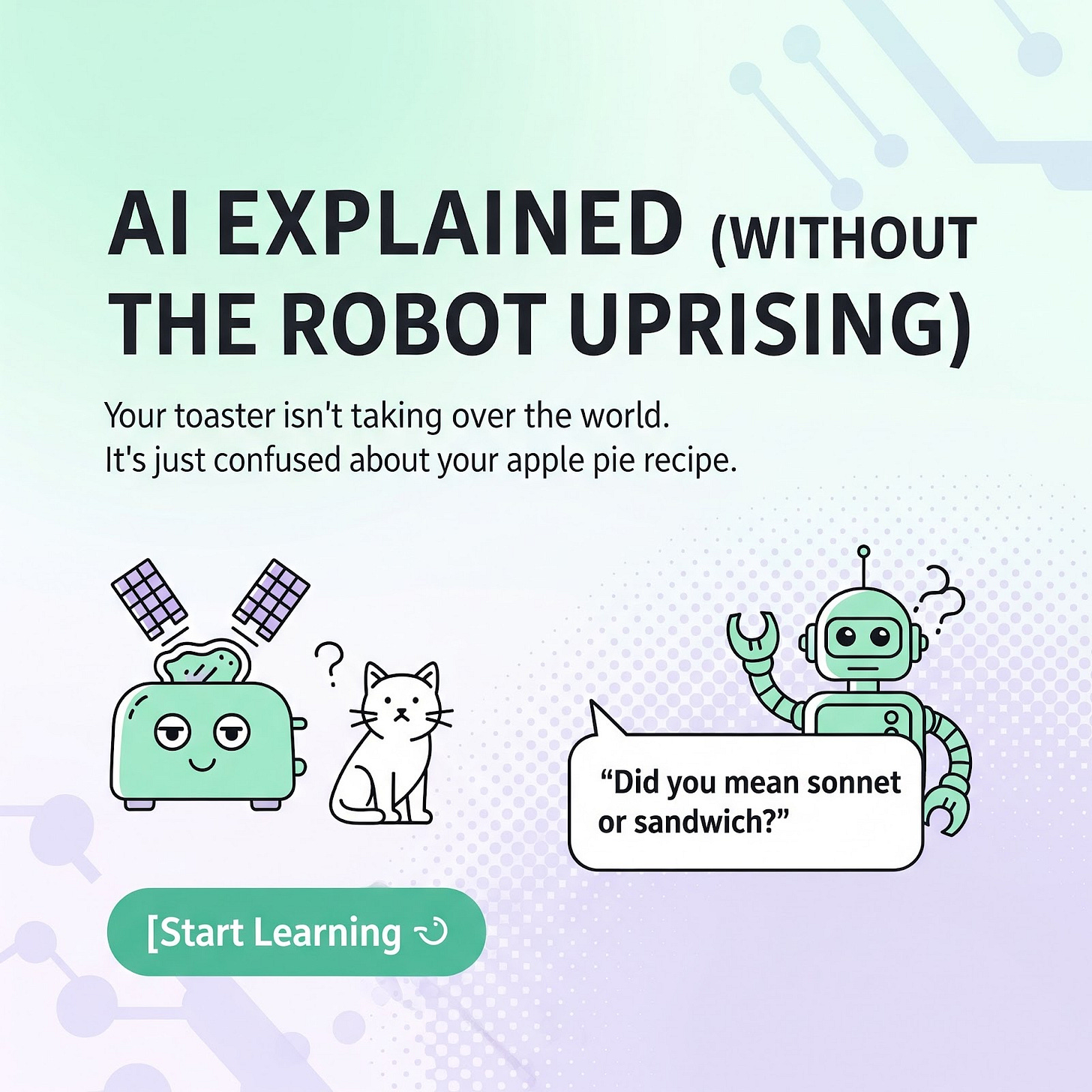

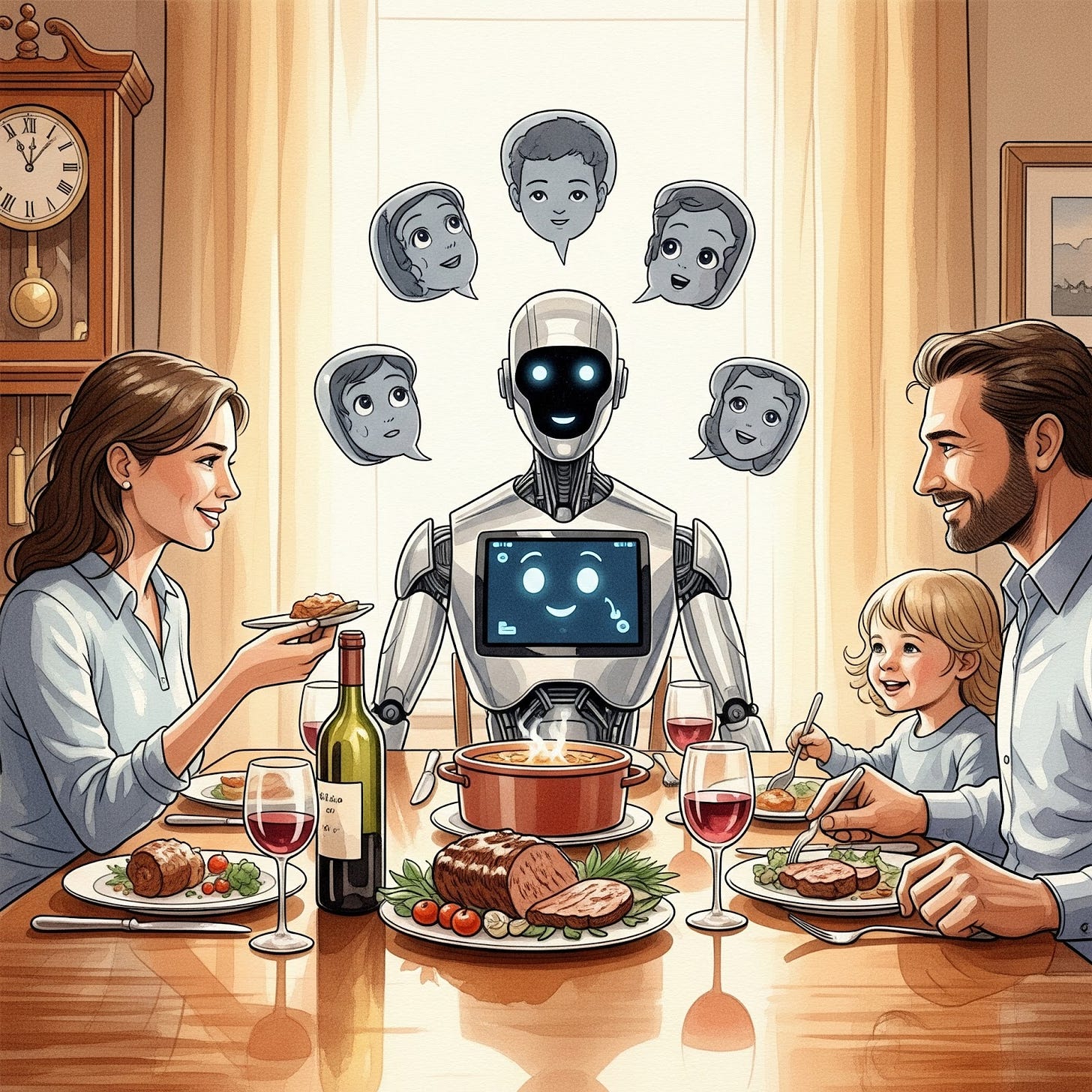
Great tips and Key Takeaways!! Nice to have the reminder of showing the benefits of use rather than talking about it with jargon!